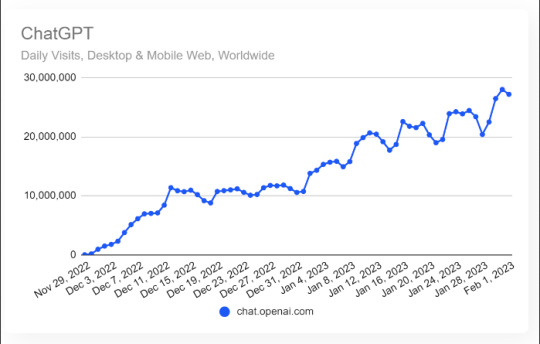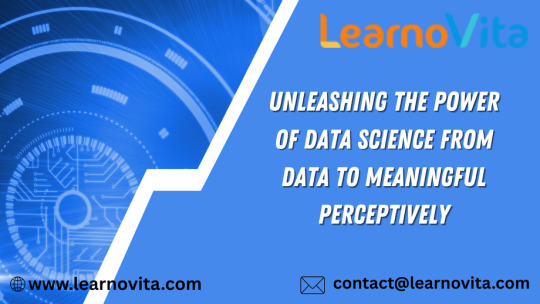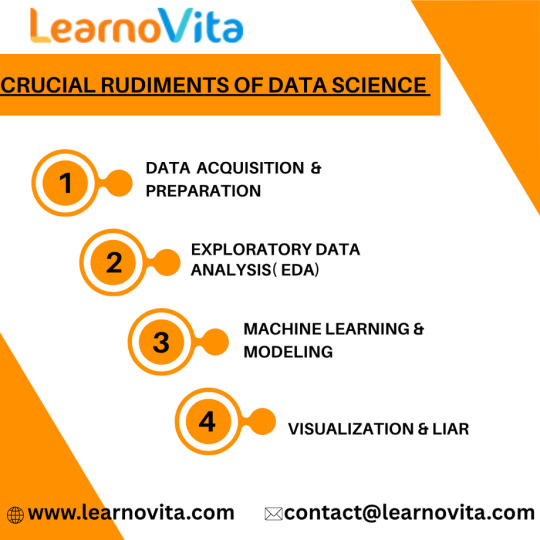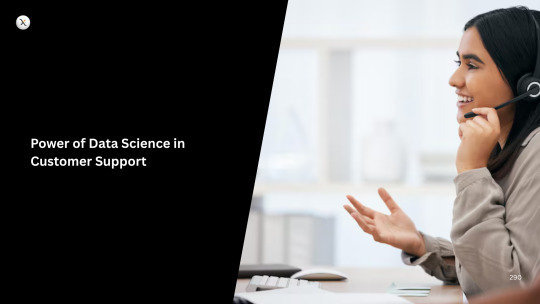#Having automated segments is not the problem
Explore tagged Tumblr posts
Text
Hot take but I think people are underselling how often Classic Sonic games automate things for the sake of spectacle in order to make the 3D games look worse by comparison
"The boost is just an instant speed button that makes you invincible to running into enemies!" you mean like the spindash. the thing that everyone loves. "But the boost doesn't take any skill to use--" I dare you to play any Unleashed level by constantly holding the boost button right now
"The loops in 3D are just for show!" and how often were the loops in 2D also just for show. the answer is most of the time. and we love them for it
"The homing attack is just mindless button presses!" oh yeah it felt really mindless in Metal Harbor where I could just spam the button without thinking and not worry about timing because I'd get across the gap no matter what. oh wait
"The automated sequences take up a lot of the level!" *flashes back to Hydrocity Zone where there are multiple long-winded segments where going downhill gives you so much speed that the most effective way to continue is to not touch anything on the controller and let the level play itself*
#sonic the hedgehog#I'm so tired of the automation discussions you guys#Having automated segments is not the problem#it's entirely dependent on how they're used#and frankly I like it when Sonic levels have a special lil sequence in them. gives off roller coaster vibes
16 notes
·
View notes
Text
Track #2-23: Omega Fallen
youtube
Artist: Nick Perrin
Original: Facing a Huge Reaction, Sector 3 Restore the Cooling Installation Timer Mission by Minako Hamano and Akira Fujiwara
Length: 6:05
Metroid Fusion has some motifs that recur a few times throughout the soundtrack to signal that the game's central intrigue is at play. The two big songs that share this motif are "Facing a Huge Reaction" and "Sector 3 Restore the Cooling Installation Timer Mission" (a song which, by the way, I just learned today is not actually called 'Crisis Mission'.) The first is a slightly mysterious piece that moves into a heroic section before the loop, and the second is a powerful, foreboding piece that plays during the game's most intense setpieces, including the final battle against the Omega Metroid in the docking bay that homages Aliens. This song also uses many (bitcrushed) orchestral instruments to up the stakes, a rarity in the series prior to Other M.
In this remix, Nick Perrin primarily draws from the Crisis Mission theme, and brings an orchestral style to the table with heavy emphasis on fast-playing strings and bassy horns. The remix quotes a segment original to 'Facing a Huge Reaction' about a minute in before heading into the Crisis Mission, developing the song down-tempo before crescendoing to massive orchestral hits just before the four-mission mark. The song ends by winding down into a piano-led section of the Crisis Mission theme, with the arrangement making it sound like the same motif in 'Last Instructions' and ending on chimes.
This is a pretty tremendous remix, both in length and scope. I have said before that orchestra can be a very demanding style to arrange for, and we've seen how that can trip up remixers before on these albums. But there are no such problems in this remix, which perfectly captures the high-stakes atmosphere of Fusion's most memorable moments. Nick Perrin's arrangement is a natural fit for the original song, and by using elements of the game's other themes with the same motif brings enough emotion and variety to make six minutes fly by. This remix easily matches Sam Dillard's similar contributions to Harmony of a Hunter while retaining personal touches that make it stand out from the pack, like the recurring chimes and rapid tempo shifts. This remix is like a horizontal snapshot of all of Fusion's greatest moments in one song.
Rating: ⭐⭐⭐⭐
Track #2-22: Guardians of Old Track #2-24: Automation
9 notes
·
View notes
Text
From Data to Decisions: Leveraging Product Analytics and AI Services for Faster B2B Innovation
In today’s competitive B2B landscape, innovation isn’t just about having a great product idea. It’s about bringing that idea to life faster, smarter, and with precision. That means making every decision based on real data, not guesswork. At Product Siddha, we help businesses unlock faster B2B innovation by combining the power of product analytics and AI services into one seamless strategy.
Why B2B Innovation Fails Without Data-Driven Insight
Most B2B companies struggle to innovate at scale because they lack visibility into what users actually do. Product teams launch features based on assumptions. Marketing teams operate without a feedback loop. Sales teams miss opportunities due to fragmented data. This disconnect creates wasted effort and missed growth.
Product analytics is the solution to this problem. When integrated with AI services, you don’t just track user behavior — you predict it. This lets you make smarter decisions that directly improve your product roadmap, customer experience, and business outcomes.
The Power of Product Analytics in B2B Growth
Product analytics turns user behavior into actionable insight. Instead of relying on vanity metrics, Product Siddha helps you understand how real people interact with your product at every stage. We implement tools that give you a complete view of the user journey — from first touchpoint to long-term retention.
With powerful product analytics, you can:
Identify high-impact features based on real usage
Spot friction points and user drop-offs quickly
Personalize product experiences for higher engagement
Improve onboarding, reduce churn, and boost ROI
This is not just reporting. It’s clarity. It’s control. And it’s the foundation of faster B2B innovation.
Accelerate Outcomes with AI Services That Work for You
While product analytics shows you what’s happening, AI services help you act on that data instantly. Product Siddha designs and builds low-code AI-powered systems that reduce manual work, automate decisions, and create intelligent workflows across teams.
With our AI services, B2B companies can:
Automatically segment users and personalize messaging
Trigger automated campaigns based on user behavior
Streamline product feedback loops
Deliver faster support with AI chatbots and smart routing
Together, AI and analytics make your product smarter and your business more efficient. No more delayed decisions. No more data silos. Just continuous improvement powered by automation.
Our Approach: Build, Learn, Optimize
At Product Siddha, we believe innovation should be fast, measurable, and scalable. That’s why we use a 4-step framework to integrate product analytics and AI services into your workflow.
Build Real, Fast
We help you launch an MVP with just enough features to test real-world usage and start gathering data.
Learn What Matters
We set up product analytics to capture user behavior and feedback, turning that information into practical insight.
Stack Smart Tools
Our AI services integrate with your MarTech and product stack, automating repetitive tasks and surfacing real-time insights.
Optimize with Focus
Based on what you learn, we help you refine your product, personalize your messaging, and scale growth efficiently.
Why Choose Product Siddha for B2B Innovation?
We specialize in helping fast-moving B2B brands like yours eliminate complexity and move with clarity. At Product Siddha, we don’t just give you data or automation tools — we build intelligent systems that let you move from data to decisions in real time.
Our team combines deep expertise in product analytics, AI automation, and B2B marketing operations. Whether you’re building your first product or scaling an existing one, we help you:
Reduce time-to-market
Eliminate development waste
Align product and growth goals
Launch with confidence
Visit Product Siddha to explore our full range of services.
Let’s Turn Insight into Innovation
If you’re ready to use product analytics and AI services to unlock faster B2B innovation, we’re here to help. Product Siddha builds smart, scalable systems that help your teams learn faster, move faster, and grow faster.
Call us today at 98993 22826 to discover how we can turn your product data into your biggest competitive advantage.
2 notes
·
View notes
Text
Back to Factorio. Last time, I came within one inserter of setting up nuclear power before noticing that my other solutions had finally brought the factory to a decent equilibrium. This time, I'm making green chips. After some uneventful building, I throw together this prototype.

Very simple; separate train stations for the two inputs, and a belt of output that would go to its own separate station. But that single belt of output is kind of a problem. It can only carry a couple dozen assemblers' worth of green circuits, and if I want this one outpost to make a significant fraction of the circuits I'll need once I start plowing down the tech tree, I need way more. I think I'll aim for four belts of green chips.

Cool, but new problem: Input. Four belts of chips require four belts of iron and six belts of copper. Well, a little less with productivity modules, but not whole belts less. I can't build this as one big line. I have to build it as three little lines.
Well, "little" is perhaps not the right word here. Three sets of eighteen chip assemblers, compared to the five I had in my starter base. My bots are busy.

Wait a second. That's a lot of bots.

Oh, there goes my power again. But on closer inspection, this has less to do with bots charging than it does with coal vanishing, due to the coal train getting stuck at the mines.
After like an hour of messing around with train signals, redesigning intersections trying to figure out what screwed-up rail code is causing these problems...I realize a couple of rail segments in a curve are missing. Pretty much invisible to human eyes. Ugh.
...
That's where I logged off for the night, and thank goodness for this self-inflicted log forcing me to keep track of what I was doing, because a bunch of real-life stuff kept me from playing Factorio for several months. But now I'm back, and I have a log of what I was trying to do back in March. I started by making sure the coal-fired boilers were back online (getting there), and I noticed something I'm pretty sure is a visual bug.

I think the solar panels are casting shadows on the belt despite A. the presence of a light source on the other side of the belt and B. the fact that it's the middle of the night. Also the shadowed plastic looks too dark either way, especially with the normal plastic next to it.
Anyways, just two paragraphs after thanking March Me for his brilliant foresight, I have to curse him for his stupidity. Apparently he either never set up automated long-handed inserters and assembling machines, or tore it down when he started disassembling the starter base. Foolish either way.
Once I rectified that with a bit of spaghetti stapled onto the starter base, I realized I needed a lot of power poles for the new chip build, and also that I only automated the big ones. But that means I had everything for medium poles in one spot, and I just needed a little spaghetti to get everything into place.
Word of advice: Don't play with the Renai Transportation mod if you don't want to face constant spaghetti temptation. And if you do, make sure not to power thrower inserters until they're set properly.
Anyways, in the time it took to set that up and take the provided poles to power the new build, all the assemblers and inserters were pretty much produced. And in the time it took to figure out the Screenshot Toolkit, they were delivered.

All I need to do is get the trains set up.
Iron is easy enough; I've already got an iron train running from the iron mines to the starter base, so I just tweak its schedule so it switches between supplying the starter base and the circuit station.
I don't have anything like that for copper; the starter base is still running off the, um, two mining drills which still have ore. About 5,000 between them when I checked, one of which should last a bit less than an hour, the other almost two hours. Hm. Maybe I should have set up something for getting copper to the starter base.
I didn't, though. I didn't even get copper delivered to the circuits. That's because of a terrible mistake I made when setting up the copper mine's loading station.

Whichever way I curve this track, it runs into cliffs. That's what cliff explosives are for, but I never researched cliff explosives. And I tore down my starter base's labs ages ago.
Next time, I will do one of three things:
Find some fortuitous route between cliffs that gets me out of this mess
Set up temporary labs to research cliff explosives, and also temporary cliff explosives production
Move the station five meters to the right
I should probably also do something about our copper situation.
3 notes
·
View notes
Text
Did You Know the Math Simulation Software GeoGebra? 🎓🧮
In the realm of educational technology, few tools have revolutionized the way we teach and learn mathematics as profoundly as GeoGebra. This dynamic software seamlessly blends geometry, algebra, calculus, and statistics, offering a versatile platform for students and educators alike. Whether you're a teacher aiming to bring mathematical concepts to life or a student looking to explore the depths of math, GeoGebra has something to offer.
What is GeoGebra? 🤔
GeoGebra is an interactive mathematics software designed to make learning and teaching math more engaging and effective. It's a powerful tool that integrates various branches of mathematics into a single platform, providing users with a comprehensive suite of tools to explore mathematical concepts visually and interactively.
Key Features of GeoGebra 🌟
Interactive Geometry: With GeoGebra, you can create constructions and models using points, vectors, segments, lines, polygons, and conic sections. The dynamic nature of these objects allows for real-time manipulation, making abstract concepts tangible and easier to understand.
Algebraic Integration: Directly input equations and coordinates to see their graphical representations. GeoGebra links algebraic and geometric views, helping users see the relationships between different mathematical expressions.
Calculus Tools: Explore derivatives, integrals, and functions with ease. GeoGebra's calculus tools are designed to help users visualize and understand these complex concepts.
Statistics and Probability: Create graphs of statistical data, calculate probabilities, and visualize distributions. These features make it easier to teach and learn statistical concepts.
3D Graphics: GeoGebra’s 3D capabilities allow for the creation and manipulation of three-dimensional graphs and shapes, providing a deeper understanding of spatial relationships.
Spreadsheet View: Handle data efficiently with the integrated spreadsheet functionality. This feature is perfect for visualizing and analyzing large data sets.
Scripting and Custom Tools: Automate tasks and create custom tools using GeoGebra’s scripting language, GGBScript, and JavaScript. This allows for tailored solutions to specific mathematical problems.
Cross-Platform Availability: GeoGebra is accessible as a web application and on various platforms including Windows, macOS, Linux, iOS, and Android, ensuring that you can use it anywhere, anytime.
Transforming Education with GeoGebra 📚💡
GeoGebra is not just a tool for solving mathematical problems; it's a bridge that connects theoretical mathematics with practical understanding. Here’s how it’s making an impact in education:
Visualization: Complex mathematical concepts become accessible through visual representation, making it easier for students to grasp abstract ideas.
Interactive Learning: Students engage more actively with math by manipulating objects and seeing the immediate effects of changes.
Immediate Feedback: GeoGebra provides instant visual feedback, aiding in the learning process and helping students correct mistakes in real-time.
Collaborative Learning: It supports group projects and resource sharing, fostering a collaborative learning environment.
Customizable Resources: Teachers can create interactive worksheets and tailor lessons to meet the needs of their students.
Why Choose GeoGebra? 🤩
User-Friendly Interface: Designed to be intuitive and easy to use, GeoGebra is suitable for all educational levels.
Rich Community and Resources: A large community of users shares resources, tutorials, and tips, making it easier to get the most out of GeoGebra.
Cost-Effective: Free to use, GeoGebra is accessible to a wide audience, ensuring that financial barriers do not hinder learning.
Versatility: Whether you’re in elementary school, university, or working on professional research, GeoGebra has tools to meet your needs.
Real-World Applications 🌍🔍
GeoGebra’s versatility extends beyond the classroom. It’s used in academic research, professional presentations, and even in real-world problem-solving scenarios. Its ability to visualize complex data and mathematical relationships makes it an invaluable tool for a wide range of applications.
Conclusion 🎉
GeoGebra is more than just software; it's a transformative educational tool that brings mathematics to life. By combining visualization, interaction, and immediate feedback, GeoGebra helps students and teachers alike to deepen their understanding of math. Whether you're solving algebraic equations, exploring geometric constructions, or delving into calculus and statistics, GeoGebra is your go-to resource for a richer, more engaging mathematical experience. Embrace the power of GeoGebra and unlock the full potential of mathematics! 🚀🧩
3 notes
·
View notes
Text
A little output
I spent my lunch programming rather than eating, which is very typical of me when I get deeply involved in a project. I must make sure I don't fall into that obsession trap again, which has caused many burnouts in the past! 😅
My current task was to get the new generation machine to spit items out onto a connected belt. This was mostly straightforward, though it was a little tricky getting my head around supporting rotation.
Ultimately it came down to making things simple. Machines can either have an input or an output, or both. Since the side with which the machine accepts either inputs and outputs is defined at the prefab level (i.e. it's fixed based on what I set the model to), I just had to write some code to shift those input/output 'sides' depending on which of the 4 possible directions the model was placed in.
As far as handling exactly where the machine should look for an input / output belt, I kinda cheated a bit on this one.
The reason this was a little more complex is because machines can have a footprint of more than just 1x1, they can be 2x2 as well. A 2x2 machine will have a inputs / outputs on specific grid positions around its outside perimeter. How do I allow for this whilst enabling rotation of the placed object?

This. This is my cheat.
The little blob in the above image is an object that represents which grid position I want the machine to look for a belt (specifically an output belt). Because this blob is a child object of the machine, when the machine rotates - so the blob does too. At runtime, when I configure the machine, I can simply read the real-world position of the blob to get its grid coordinates. Neat!
It's easier to see top-down here:

The machine lives at grid position [6,4] and the blob lives inside the machine object at position [1,0]. Translated to absolute world position the blob lives at [7,4] - exactly where I need to be checking for belts!
I'm sure there are much better ways of doing this, but this was a pretty straightforward solution that only requires a tiny amount of preprocessing when the object is first placed, after which no additional calculation is needed.
With the positioning and belt-lookup code added, it was just a case of writing up a short Machine class, from which I derived a special 'InputMachine' class that only spits out items of a specific type.
The result you can see below!
Where is this all leading?
I suppose it's a good a time as any to review my future plans for these developments. What good are little prototypes without some larger goal in mind?
In one of my earliest posts I details the kind of game I'm hoping to make. Mechanically it's not super complicated, but it required figuring out some of the technical stuff I've been showing in recent posts - namely conveyor belts and moving items around.
I'm hoping to create a game that fits in the automation / factory genre. You'll be playing the role of someone setting up an automated factory that has been deposited and unpacked on a remote asteroid. You place down drills (inputs) that dig and spit out raw materials into your factory, and you move these around and process them in various machines in the name of science!
As I said this isn't the most complex of concepts. From a programming complexity point of view some of the legwork has already done (problem solving belts, specifically). There are areas that still need consideration, but looking over what's left to come I'm quietly confident it falls within my skill set to execute.
A cut down the middle
I expect anybody familiar with game development is aware of the term 'vertical slice'. It refers to the practice of developing a small segment of a product, but to a very polished state that could be considered represetative of its final form.
You see this a lot in game development. Particularly at conferences and exhibitions where publishers want to whip up excitement about games that could be years away from release. But there should be some delineation between a vertical slice for a trailer, and a playable vertical slice. I'm aiming for the latter.
In order to decide how to put something like that together, I need a broader understanding of the scope of the game. A vertical slice should demonstrate all the key concepts in the game, but leaving room to expand those ideas later without changing the core experience too much. It doesn't have to look like the final game either, though I would like to put some effort in there where possible.
I'll probably end this post here for now, but I'll probably detail out the main efforts I'm likely to be aiming for in order to reach this vertical slice. I will, of course, continue posting updates when I can with more details about the game's development.
And if you read this far and found some small measure of interest in here, thanks for your time and have yourself a great day! 😊
5 notes
·
View notes
Text
Unlocking Business Success: The Power of AI-Based Digital Marketing
Problem: As a business owner, you’re constantly striving to stay ahead of the curve and drive growth for your company. However, in today’s fast-paced digital landscape, achieving and maintaining a competitive edge can be a daunting task. Traditional marketing approaches often fall short in delivering the desired results, leaving many businesses struggling to reach their full potential.
Agitation: Are you tired of seeing your marketing efforts fall flat? Do you find yourself grappling with stagnant growth and limited visibility online? Are you ready to break free from the constraints of outdated strategies and propel your business towards unparalleled success?

In today’s digital age, where consumer behaviors and preferences are constantly evolving, businesses need a marketing approach that is agile, data-driven, and highly effective. AI-based digital marketing offers precisely that, empowering businesses to optimize their marketing strategies, enhance customer engagement, and maximize ROI.
Benefit 1: Enhanced Personalization
One of the key advantages of AI-based digital marketing is its ability to deliver highly personalized experiences to consumers. By leveraging advanced algorithms and machine learning techniques, businesses can analyze vast amounts of data to gain insights into consumer preferences, behaviors, and purchasing patterns. This allows them to tailor their marketing efforts accordingly, delivering targeted content and offers that resonate with individual customers on a deeper level.
Benefit 2: Improved Targeting and Segmentation
Gone are the days of casting a wide net and hoping for the best. With AI-based digital marketing, businesses can target their audience with unprecedented precision. By segmenting their target audience based on various factors such as demographics, interests, and browsing history, businesses can ensure that their marketing messages are delivered to the right people, at the right time, and through the right channels. This not only increases the effectiveness of their marketing campaigns but also minimizes wastage of resources on irrelevant audiences.
Benefit 3: Real-Time Insights and Optimization
In today’s fast-paced business environment, timely insights are invaluable. AI-based digital marketing provides businesses with real-time data and analytics, allowing them to monitor the performance of their campaigns, identify trends, and make data-driven decisions on the fly. Whether it’s adjusting ad creatives, refining targeting parameters, or optimizing website content, businesses can continuously fine-tune their marketing efforts to achieve maximum impact and ROI.
Benefit 4: Enhanced Customer Engagement and Retention

Benefit 5: Cost-Effectiveness and Efficiency
Contrary to popular belief, AI-based digital marketing doesn’t have to break the bank. In fact, it can be a highly cost-effective solution for businesses of all sizes. By automating repetitive tasks, streamlining processes, and optimizing resource allocation, AI-based digital marketing helps businesses maximize their marketing budget and achieve greater efficiency. This allows businesses to allocate their resources more strategically, focusing on activities that deliver the highest return on investment.
Ready to experience the transformative power of AI-based digital marketing for your business? Don’t miss out on this opportunity to take your marketing efforts to the next level and unlock unprecedented growth and success.
Sign up for our one-month free trial offer today and see the difference for yourself. Our team of experts will work with you to tailor a customized AI-based digital marketing strategy that aligns with your business goals and objectives. With our proven track record of delivering results, you can trust that you’re making a smart investment in the future of your business.
Don’t wait any longer — seize the opportunity and propel your business towards greatness with AI-based digital marketing.
In conclusion, AI-based digital marketing isn’t just a buzzword — it’s a powerful tool that can revolutionize the way businesses engage with their customers, drive growth, and achieve lasting success. By embracing AI technology, businesses can stay ahead of the competition, adapt to changing market dynamics, and thrive in today’s digital-first world.
Book a free Consultation Now to Enrich Your business to a new Potential https://calendly.com/debjitb20/discovery-call
4 notes
·
View notes
Text
How will Digital Marketing Change in the future ?
The future of digital marketing is bright because now there is more market and consumer awareness. Businesses can also use a wide range of smart tools to collect an ocean of data and make in-depth analyses of their target audience. It's a completely new way to approach the audience.
The application of digital media marketing is making companies surge with demand and supplies of products to customers at a greater speed. Therefore, applying smart techniques with the help of various tools of digital marketing would benefit the companies to take advantage of the increasing demand in the customer segment and earn profit.
Digitization:
Everything is becoming digitized and fully automated in the days to come. If people are using things that are connected to the internet, then advertisement agencies and digital marketers should also come up with ways where there is the maximum possibility of traffic coming.
With everything becoming digital, the application of search engine optimization, social media marketing, and AdWords is going to help marketers to bag new opportunities and attract customers to purchase their products.
Network:
With more and more network towers coming up and new satellites being set up in the universe to make communication effective, the time is going to come when the network would be stronger than ever before. This is going to make things easy, quick, and transparent. Network availability and access are going to prove instrumental in making digital marketing the only way to reach customers.
Increased Demand:
The coming years are going to see customers getting more prosperous than ever before. With more purchasing power, people would want to purchase more products and services. This is going to facilitate things in the companies by making them available online to the customers and working with great speed to get the product delivered to them with no hassle. This is going to be another important tool that would lure customers and the fight would be about this aspect within the competitors.
What are the In-Demand Digital Marketing Skills?
Digital marketing requires a unique combination of both creativity and technical knowledge. And so, digital marketers have to master a wide range of skills and tools in order to stay on top of the ever-growing digital media channels they used to create, deploy, manage, and track campaigns. In such a vast field, you will meet a variety of sections, each of which requires a unique skill set.
Below is a list of prominent skills for a digital marketing career.
Data Analytics:
You must know how to use and understand Google Analytics or the alternatives, such as Google Tag Manager and SQL. Monitoring and reporting can be tricky, but it helps to understand your customer's behavior. With this knowledge, you can apply it to new solutions that boost traffic and conversions.
SEO (Search Engine Optimization):
Search Engine Optimization or SEO is structuring your content to show up on search engine websites (Google, Bing, Yahoo). Marketers will try to ‘rank’ a certain word or phrase relevant to their business so their potential customers will find them. This is called organic traffic. It’s essential to know SEO if you want to become a successful digital marketer.
Content Marketing:
Content marketing refers to the creation and promotion of valuable content for the audience. It helps in establishing trust in the audience and attracting new visitors. All the content you see online, whether it’s a blog article or a YouTube video, results from content marketing. Brands can help their prospects by solving their real-life problems through high-quality content.
Long story short, these are some of the latest digital trends that you must know if you are unaware of these trends or you may not compete with your competitors. Therefore, I suggest you consider this article and update your skills accordingly.
3 notes
·
View notes
Text
There are larger sociological implications as well. AI making up stuff is bad enough today. Imagine if the sociopathic would-be oligarchs among the techbro elite decide that reality as presented by their AI needs to be edited to conform with their personal or political views.
The recent election in the US has shown that Americans' longstanding anti-intellectual streak has expanded to a much larger segment of the population. Both Trump and many of his supporters reject the premise that experts might know their field, preferring conspiracy theories about the experts all collaborating to conceal the truth, or issuing grandiose pronouncements of nonexistent personal understanding of the field.* And then, per the above, people attempting to get advanced degrees seem to have a severe critical thinking deficit. But, sure, the computer knows.
Another problem: the trustworthiness of today's "AI" is well understood to be extremely poor, a serious problem to which no one has a solution aside from the mega-effort of manual curation—which is an admission that AI has failed. AI's invented/polluted data is without (as far as we know) bad actors like Elon putting their thumbs on the scale to adjust what the AI says. At this point it seems safe to predict that Elon's AI will soon repeat falsehoods like "Trump won the election in 2020" and "vaccines aren't safe and should be banned." Combine that with the lack of critical thinking skills among the supposedly recently educated, and it's a recipe for people who lack the thinking skills for functioning in a democracy or even within daily life, because they've outsourced their brain to ChatGPT.
* "I know more than the generals" or "I've studied automation and I know all there is to know about it"
I just started grad school this fall after a few years away from school and man I did not realize how dire the AI/LLM situation is in universities now. In the past few weeks:
I chatted with a classmate about how it was going to be a tight timeline on a project for a programming class. He responded "Yeah, at least if we run short on time, we can just ask chatGPT to finish it for us"
One of my professors pulled up chatGPT on the screen to show us how it can sometimes do our homework problems for us and showed how she thanks it after asking it questions "in case it takes over some day."
I asked one of my TAs in a math class to explain how a piece of code he had written worked in an assignment. He looked at it for about 15 seconds then went "I don't know, ask chatGPT"
A student in my math group insisted he was right on an answer to a problem. When I asked where he got that info, he sent me a screenshot of Google gemini giving just blatantly wrong info. He still insisted he was right when I pointed this out and refused to click into any of the actual web pages.
A different student in my math class told me he pays $20 per month for the "computational" version of chatGPT, which he uses for all of his classes and PhD research. The computational version is worth it, he says, because it is wrong "less often". He uses chatGPT for all his homework and can't figure out why he's struggling on exams.
There's a lot more, but it's really making me feel crazy. Even if it was right 100% of the time, why are you paying thousands of dollars to go to school and learn if you're just going to plug everything into a computer whenever you're asked to think??
#chatgpt#artificial intelligence#machine learning#llm#ai technology#decline and fall of modern society#anti intellectualism#fuck techbros#oligarchy
32K notes
·
View notes
Text
Map B2B Journeys to Elevate Demand Generation Strategy in 2025
In a crowded B2B ecosystem, generating demand isn’t just about creating brand awareness — it’s about nurturing buyer interest across every stage of their decision-making process. That’s where customer journey mapping becomes a critical asset in modern B2B Demand Generation. It enables companies to align their marketing efforts with what their buyers are actually thinking, feeling, and doing.
B2B buyers no longer respond to broad marketing messages. Instead, they engage with personalized, context-aware content that aligns with their journey. A well-structured journey map makes this alignment possible.

What Is Customer Journey Mapping in a B2B Context?
Customer journey mapping is the process of documenting every step a business prospect takes before making a purchase — from identifying a need to becoming a paying and loyal customer. When applied to B2B Demand Generation, it provides the foundation for delivering the right content, through the right channel, at the right time.
This strategic map accounts for key touchpoints, emotional states, informational needs, and possible roadblocks along the buyer path.
Stages of the B2B Buyer’s Journey
Understanding and aligning to each stage is essential for any B2B Demand Generation strategy:
Awareness Buyers become conscious of a problem. They seek educational content to understand it. Blogs, explainer videos, and webinars should aim to inform, not sell.
Consideration Now that buyers know their issue, they research possible solutions. This is a key moment for B2B Demand Generation to step in with how-to guides, whitepapers, and solution-based webinars.
Evaluation Prospects are comparing vendors. They analyze features, pricing, and support. At this point, sales teams often engage, but marketing still plays a role with tailored content and ROI comparisons.
Decision The purchase decision is made, but nurturing shouldn’t stop here. Continued engagement, onboarding, and support solidify long-term customer value.
Retention & Advocacy For B2B Demand Generation to scale, satisfied customers must become repeat buyers and advocates. Post-sale email flows, case studies, and loyalty programs matter.
Why Journey Mapping Powers Smarter B2B Demand Generation
It Reveals Buyer Motivations Journey maps reveal why buyers act the way they do. This insight allows marketers to develop B2B Demand Generation content that is not only relevant but emotionally resonant.
It Uncovers Gaps in Messaging Mapping the journey exposes weak points where leads are dropping off or failing to convert. You can revise messaging or offer additional resources to retain attention.
It Helps Prioritize Marketing Efforts Not all buyer stages are created equal. Some may need more content or engagement. Journey maps help direct time and budget toward the most critical areas of the funnel.
How to Create a Customer Journey Map for B2B Demand Generation
Segment Your Target Audience Begin with well-defined personas. In B2B Demand Generation, you might target IT managers, procurement officers, or marketing heads. Each has a unique journey.
Identify Key Questions at Each Stage Ask: What is the buyer trying to learn at each stage? What concerns do they have? How do they prefer to consume information?
Map Touchpoints to Buyer Behavior List all possible interactions — website visits, email opens, demo signups, ad clicks, etc. Map how these activities align with the buyer’s needs.
Align Content to Each Phase
TOFU (Top of Funnel): Blog posts, infographics, SEO pages
MOFU (Middle of Funnel): Case studies, analyst reports, product comparisons
BOFU (Bottom of Funnel): Product demos, testimonials, pricing guides
Implement Tools for Real-Time Feedback Use CRM and marketing automation platforms to track performance and refine your journey maps based on actual buyer behavior. This elevates your B2B Demand Generation efforts from guesswork to precision.
Using Data to Inform Your B2B Journey Maps
For B2B Demand Generation to be successful, decisions must be backed by data. Sources to draw from include:
Website Analytics: Identify which pages attract first-time visits vs. repeat traffic
Email Metrics: Open rates and click-through data tell you what messaging resonates
Sales Insights: Qualitative feedback from reps helps pinpoint objections and motivations
Intent Data Platforms: Real-time behavioral data helps understand who is in-market and when
With this information, you can refine your journey maps continuously — keeping your B2B Demand Generation strategy agile and effective.
Journey Mapping for Multi-Stakeholder Buying Committees
In B2B sales, there’s rarely a single decision-maker. Committees of buyers, each with different concerns and priorities, require individualized paths. For example:
CTO: Wants to know about integration, scalability, and security
CFO: Looks for ROI, cost-savings, and budget alignment
Operations Head: Prioritizes efficiency, ease of implementation
Build maps for each stakeholder and make sure your B2B Demand Generation strategy includes resources tailored to their role.
Avoiding Common Journey Mapping Pitfalls
One-Size-Fits-All Messaging Generic messaging ignores the complexity of B2B journeys. Make sure each persona and stage gets tailored content.
Neglecting the Post-Sale Journey B2B Demand Generation doesn’t stop at conversion. Happy customers are your best promoters. Invest in onboarding, check-ins, and satisfaction tracking.
Underutilizing Technology Without the right tools, journey mapping becomes manual and slow. Use automation, intent tools, and CRM systems to scale and refine.
Failing to Involve Sales Sales reps often have firsthand insights about buyer friction. Involving them ensures your maps are grounded in real-world interactions.
How to Optimize B2B Demand Generation Through Journey Mapping
Once your journey maps are in place, optimization becomes the next step. Key actions include:
A/B Testing: Test headlines, CTAs, and formats at each stage
Lead Scoring: Assign scores based on behavior to guide handoffs to sales
Retargeting Campaigns: Keep mid-funnel leads engaged with display and social ads
Behavioral Triggers: Set automated responses for high-intent actions (e.g., demo page visits)
By aligning each optimization with a journey stage, your B2B Demand Generation strategy stays focused on moving leads forward.
Top Metrics to Watch
Stage-by-Stage Conversion Rates
Marketing Qualified Leads (MQLs) Generated
Average Time in Funnel
Lead Nurture Engagement
Customer Churn and Retention Trends
Tracking these KPIs ensures your journey maps are not only insightful — they’re delivering results across the entire B2B Demand Generation cycle.
Read Full Article: https://acceligize.com/featured-blogs/customer-journey-mapping-for-b2b-demand-generation-a-guide-to-success/
About Us:
Acceligize is a leader in end-to-end global B2B demand generation solutions, and performance marketing services, which help technology companies identify, activate, engage, and qualify their precise target audience at the buying stage they want. We offer turnkey full funnel lead generation using our first party data, and advanced audience intelligence platform which can target data sets using demographic, firmographic, intent, install based, account based, and lookalike models, giving our customers a competitive targeting advantage for their B2B marketing campaigns. With our combined strengths in content marketing, lead generation, data science, and home-grown industry focused technology, we deliver over 100,000+ qualified leads every month to some of the world’s leading publishers, advertisers, and media agencies for a variety of B2B targeted marketing campaigns.
Read more about our Services:
Content Syndication Leads
Marketing Qualified Leads
Sales Qualified Leads
0 notes
Text
What to Expect from Top QA Software Testing Courses?
In the dynamic and rapidly evolving IT landscape, Quality Assurance (QA) software testing has emerged as a crucial discipline that ensures software products meet the highest standards before they reach end users. The role of a QA tester is integral to any software development lifecycle, making QA professionals highly sought after. However, with numerous QA software testing courses available, knowing exactly what to expect from top-tier courses can be a daunting task.
This comprehensive guide sheds light on the essential elements you should anticipate from premier QA software testing courses, ensuring you gain maximum value and set yourself up for career success.
Comprehensive Curriculum Covering Fundamental Concepts
Top QA software testing courses provide a detailed curriculum covering the core concepts of software testing, equipping learners with foundational knowledge. Expect to delve into topics such as:
Software Testing Basics: Understanding the principles, concepts, and importance of software testing.
Types of Testing: Explorations into manual testing, automated testing, functional and non-functional testing, regression testing, usability testing, and performance testing.
Software Development Life Cycle (SDLC) and Software Testing Life Cycle (STLC): Deep dive into methodologies including Agile, Scrum, Waterfall, and their relation to QA.
Defect Life Cycle Management: Learning to track, document, and manage software defects effectively.
A well-rounded course ensures you grasp not just theoretical knowledge but also how to practically apply these fundamentals in real-world scenarios.
Extensive Hands-On Experience and Real-World Projects
Expect to engage in extensive hands-on projects when enrolling in a quality QA software testing course. Practical application of concepts learned in the classroom is critical. Courses often include:
Project-Based Assignments: These involve working on actual software applications, conducting tests, and reporting bugs.
Interactive Labs: Use of industry-standard tools in simulated environments to replicate real-world QA testing scenarios.
Capstone Projects: Large-scale projects designed to showcase your cumulative learning, often mirroring real industry challenges.
Such hands-on experiences solidify theoretical concepts and enhance practical problem-solving skills, making you job-ready upon course completion.
Proficiency in Industry-Leading QA Testing Tools
Top QA courses will familiarize you with the latest and most widely used software testing tools. These tools help automate, streamline, and efficiently execute QA processes. Expect to gain proficiency in tools such as:
Selenium: For automated web browser testing.
JIRA: To manage test cases and defect tracking.
TestRail: For comprehensive test management.
JMeter and LoadRunner: For performance testing.
Postman: For API testing.
Mastering these tools ensures you're not only aware of the industry's best practices but also competent in executing them effectively in professional settings.
Expert Instruction from Industry Professionals
Top QA software testing courses are often distinguished by their instructors. Expect your training to be delivered by experienced professionals who:
Hold substantial real-world QA industry experience.
Have worked on diverse and complex projects.
Understand current market demands and the latest trends.
Provide practical tips and career guidance based on first-hand experiences.
Such mentorship helps bridge the gap between theoretical knowledge and industry expectations, offering invaluable insights for career advancement.
Robust Course Structure and Clear Learning Outcomes
Premier QA courses offer clear and organized curricula with structured modules, each targeting specific learning outcomes. Expect:
Clearly Defined Goals: Each course segment should outline precisely what knowledge and skills you will acquire.
Regular Assessments: Quizzes, assignments, and periodic tests to measure your progress.
Interactive Learning: Opportunities to engage in group discussions, forums, and collaborative exercises to reinforce learning.
This organized approach ensures consistent progress and clarity about your skill development throughout the course.
Preparation for Industry Certifications
Many top-tier QA software testing courses align their content with industry-recognized certifications, such as:
ISTQB (International Software Testing Qualifications Board)
Certified Software Tester (CSTE)
Certified Associate in Software Testing (CAST)
Expect dedicated sessions or modules that specifically prepare you for these examinations, greatly enhancing your professional credibility and employability.
Flexible Learning Formats
Recognizing diverse learner needs, top courses offer various formats such as:
Online and In-Person Options: Catering to those preferring either face-to-face interaction or flexible, remote learning.
Part-time and Full-time Scheduling: Allowing you to choose courses that fit your lifestyle, whether you're a working professional or a full-time learner.
Flexibility ensures that learning is accessible, regardless of your personal circumstances or professional commitments.
Personalized Career Support and Job Placement Assistance
Top courses go beyond teaching; they actively assist you in career development. Expect support including:
Resume Preparation: Personalized guidance on crafting professional resumes tailored specifically for QA roles.
Interview Training: Sessions on mastering QA job interviews, focusing on both technical and behavioral aspects.
Job Placement Assistance: Connections to internships, entry-level positions, and networking opportunities within the QA testing industry.
This holistic support significantly improves your chances of landing a desirable job in QA testing.
Strong Community and Networking Opportunities
Enrollment in reputable Quality assurance courses online often grants you access to vibrant communities. Expect:
Alumni Networks: Active alumni communities provide mentorship and share job opportunities.
Industry Connections: Networking events, webinars, and workshops that introduce you to industry leaders.
Peer Learning: Opportunities to collaborate with classmates on projects, discuss industry trends, and build long-lasting professional relationships.
These networks can open doors to numerous career opportunities and continual professional growth.
Continuous Learning Resources and Lifetime Access
Top courses provide access to ongoing resources, even post-completion. This usually includes:
Resource Libraries: Access to up-to-date materials, case studies, and the latest research.
Refresher Content: Availability of refresher courses or updated modules to ensure your skills stay relevant as the industry evolves.
Community Forums: Continuous engagement through forums and discussion boards for lifelong learning and skill enhancement.
Such resources ensure your skills remain sharp, relevant, and aligned with market needs.
Conclusion
Enrolling in a top QA software testing course offers a comprehensive, structured, and highly practical learning experience. By expecting and selecting courses that include a robust curriculum, hands-on projects, professional tools proficiency, industry expert instruction, certification preparation, flexible learning, personalized career assistance, strong community engagement, and continuous learning resources, you set yourself on a clear path to a successful and rewarding career in QA software testing.
Investing in your education through a reputable QA testing course can indeed be transformative, elevating your professional capabilities and opening doors to endless career opportunities in the dynamic world of software development.
0 notes
Text
Unlocking Data Science's Potential: Transforming Data into Perceptive Meaning
Data is created on a regular basis in our digitally connected environment, from social media likes to financial transactions and detection labour. However, without the ability to extract valuable insights from this enormous amount of data, it is not very useful. Data insight can help you win in that situation. Online Course in Data Science It is a multidisciplinary field that combines computer knowledge, statistics, and subject-specific expertise to evaluate data and provide useful perception. This essay will explore the definition of data knowledge, its essential components, its significance, and its global transubstantiation diligence.

Understanding Data Science: To find patterns and shape opinions, data wisdom essentially entails collecting, purifying, testing, and analysing large, complicated datasets. It combines a number of fields.
Statistics: To establish predictive models and derive conclusions.
Computer intelligence: For algorithm enforcement, robotization, and coding.
Sphere moxie: To place perceptivity in a particular field of study, such as healthcare or finance.
It is the responsibility of a data scientist to pose pertinent queries, handle massive amounts of data effectively, and produce findings that have an impact on operations and strategy.
The Significance of Data Science
1. Informed Decision Making: To improve the stoner experience, streamline procedures, and identify emerging trends, associations rely on data-driven perception.
2. Increased Effectiveness: Businesses can decrease manual labour by automating operations like spotting fraudulent transactions or managing AI-powered customer support.
3. Acclimatised Gests: Websites like Netflix and Amazon analyse user data to provide suggestions for products and verified content.
4. Improvements in Medicine: Data knowledge helps with early problem diagnosis, treatment development, and bodying medical actions.
Essential Data Science Foundations:

1. Data Acquisition & Preparation: Databases, web scraping, APIs, and detectors are some sources of data. Before analysis starts, it is crucial to draw the data, correct offences, eliminate duplicates, and handle missing values.
2. Exploratory Data Analysis (EDA): EDA identifies patterns in data, describes anomalies, and comprehends the relationships between variables by using visualisation tools such as Seaborn or Matplotlib.
3. Modelling & Machine Learning: By using techniques like
Retrogression: For predicting numerical patterns.
Bracket: Used for data sorting (e.g., spam discovery).
For group segmentation (such as client profiling), clustering is used.
Data scientists create models that automate procedures and predict problems. Enrol in a reputable software training institution's Data Science course.
4. Visualisation & Liar: For stakeholders who are not technical, visual tools such as Tableau and Power BI assist in distilling complex data into understandable, captivating dashboards and reports.
Data Science Activities Across Diligence:
1. Online shopping
personalised recommendations for products.
Demand-driven real-time pricing schemes.
2. Finance & Banking
identifying deceptive conditioning.
trading that is automated and powered by predictive analytics.
3. Medical Care
tracking the spread of complaints and formulating therapeutic suggestions.
using AI to improve medical imaging.
4. Social Media
assessing public opinion and stoner sentiment.
curation of feeds and optimisation of content.
Typical Data Science Challenges:
Despite its potential, data wisdom has drawbacks.
Ethics & Sequestration: Preserving stoner data and preventing algorithmic prejudice.
Data Integrity: Inaccurate perception results from low-quality data.
Scalability: Pall computing and other high-performance structures are necessary for managing large datasets.
The Road Ahead:
As artificial intelligence advances, data wisdom will remain a crucial motorist of invention. unborn trends include :
AutoML – Making machine literacy accessible to non-specialists.
Responsible AI – icing fairness and translucency in automated systems.
Edge Computing – Bringing data recycling near to the source for real- time perceptivity.
Conclusion:
Data wisdom is reconsidering how businesses, governments, and healthcare providers make opinions by converting raw data into strategic sapience. Its impact spans innumerous sectors and continues to grow. With rising demand for professed professionals, now is an ideal time to explore this dynamic field.
0 notes
Text
The Role of Technology in Modern Auto Repair Services
The automotive repair industry has transformed dramatically in recent years, thanks to the rapid advancement of technology. Today’s vehicles are more complex than ever, with integrated computer systems, sensors, and electronic components that require highly specialized tools and knowledge to maintain and repair. As a result, modern auto repair shops must stay up to date with the latest technologies to provide accurate, efficient, and dependable service. source:ورشة صيانة سيارات
One of the most significant changes in auto repair is the use of computerized diagnostic tools. These tools connect directly to a car’s onboard systems and quickly identify issues that would take hours to diagnose manually. Whether it's an engine misfire, transmission problem, or an electrical glitch, diagnostic scanners give technicians immediate access to fault codes and system data. This not only speeds up the repair process but also ensures precision in identifying the root cause of the problem.
Technology has also revolutionized the way repair shops communicate with customers. Many modern shops now offer digital inspection reports, complete with photos and videos of the damaged or worn parts. This transparency builds trust with customers, as they can see the condition of their vehicle and understand exactly why a repair is needed. It also allows for faster approvals, as customers can review and approve recommended services via text or email without having to visit the shop in person. more:مركز صيانة بي ام دبليو بالرياض
Another benefit of technology in auto repair is improved parts ordering and inventory systems. With advanced software, repair shops can quickly check the availability of parts, compare prices, and place orders in real time. This minimizes delays and helps ensure that the right parts are installed the first time. It also reduces the chance of human error, which can be costly and time-consuming to fix.
For hybrid and electric vehicles, technology plays an even more critical role. These vehicles operate with high-voltage systems and specialized components that require unique knowledge and equipment. Repair shops that service EVs must be trained and equipped to handle battery diagnostics, software updates, and electronic drivetrain repairs. This growing segment of the auto industry highlights the need for continuous learning and adaptation among repair professionals. also:مركز صيانة جاكوار بالرياض
Modern tools such as laser alignment machines, computer-balanced tire systems, and advanced welding equipment have also raised the standard for precision in auto body and mechanical repairs. These tools enhance safety and performance while reducing the time a vehicle spends in the shop. Furthermore, repair shops are beginning to use artificial intelligence and machine learning to predict maintenance needs based on a vehicle’s usage, environment, and performance data.
Embracing technology also improves the overall customer experience. Online appointment scheduling, digital payment systems, and automated service reminders make it easier than ever for customers to manage their vehicle maintenance. Some shops even provide mobile apps where customers can track their service history, get estimates, and receive notifications about upcoming services.
In conclusion, technology has become a cornerstone of the modern auto repair industry. It enhances diagnostic accuracy, streamlines communication, speeds up repairs, and delivers a more transparent and convenient experience for customers. For car owners, choosing a tech-savvy auto repair shop means better service, safer vehicles, and greater peace of mind. As cars continue to evolve, so too must the shops that keep them running — and technology is leading the way. visit us:مركز صيانة رنج روفر بالرياض
0 notes
Text
Unlocking the Power of Data Science in Customer Support

Customer support has long been viewed as a cost center, a necessary evil, or simply a reactive department. But in today's fiercely competitive landscape, it's increasingly recognized as a crucial differentiator, a direct line to customer loyalty, and a goldmine of untapped insights. The secret weapon transforming this perception? Data Science.
No longer limited to just tracking call volumes or average handling times, data science is revolutionizing how businesses understand, serve, and retain their customers. By leveraging advanced analytics, machine learning, and AI, organizations are moving from reactive problem-solving to proactive, personalized, and hyper-efficient support experiences.
Here's how data science is unleashing its power in customer support:
1. Predictive Analytics for Proactive Support
Imagine knowing a customer is about to churn before they even express dissatisfaction, or identifying a potential product issue before it escalates into widespread complaints.
How Data Science Helps: By analyzing historical data (e.g., purchase history, website interactions, past support tickets, product usage patterns), data scientists can build models to predict customer churn, identify customers at high risk of needing support, or even anticipate product malfunctions.
Impact: This enables businesses to offer proactive outreach, personalized assistance, or targeted solutions, often resolving issues before the customer even realizes there's a problem, drastically improving satisfaction and retention.
2. Personalization of Support Interactions
Customers expect relevant, tailored experiences. Generic responses and one-size-fits-all solutions are a fast track to frustration.
How Data Science Helps: Data science algorithms can segment customers based on their behavior, preferences, and past interactions. When a customer reaches out, the system can instantly provide the agent (or an automated system) with a comprehensive view of their history, preferences, and relevant context.
Impact: This allows support agents to offer highly personalized solutions, recommend relevant resources, or even suggest upgrades/downgrades that truly fit the customer's needs, leading to quicker resolutions and a more positive experience.
3. Sentiment Analysis & Voice of Customer (VoC) Insights
Unstructured data like customer feedback, call transcripts, chat logs, and social media comments contain a wealth of information about customer sentiment and pain points.
How Data Science Helps: Natural Language Processing (NLP) and sentiment analysis models can automatically extract emotions, identify common themes, categorize feedback, and pinpoint emerging issues from vast volumes of text and speech data.
Impact: This provides invaluable Voice of Customer (VoC) insights, allowing businesses to understand why customers are frustrated, identify systemic problems with products or services, and prioritize fixes that will have the biggest impact on customer happiness.
4. Optimizing Resource Allocation & Routing
Efficiency is key in support centers, but it shouldn't come at the expense of customer experience.
How Data Science Helps: Machine learning models can predict the complexity of an incoming query, estimate handle times, and intelligently route customers to the most suitable agent based on their expertise, past interactions, or even real-time agent availability.
Impact: Reduces wait times, improves first-contact resolution rates, and ensures customers are connected with agents best equipped to solve their specific problem, leading to higher agent efficiency and customer satisfaction.
5. Automating Routine Tasks & Enhancing Chatbots
While not replacing human agents, data science-powered automation can handle a significant portion of routine inquiries.
How Data Science Helps: Advanced chatbots and virtual assistants, powered by LLMs and NLU, can understand complex queries, access knowledge bases, and provide accurate answers for frequently asked questions or simple transactions. When human intervention is needed, the chatbot can seamlessly transfer the conversation, providing the human agent with a complete transcript and context.
Impact: Frees up human agents to focus on complex, high-value interactions that require empathy and nuanced problem-solving. This significantly reduces operational costs and improves overall response times.
Benefits That Extend Beyond Efficiency
The power of data science in customer support isn't just about cutting costs or improving speed. It fundamentally shifts the nature of customer interaction, leading to:
Enhanced Customer Experience (CX): More personalized, proactive, and efficient support builds trust and loyalty.
Reduced Churn: Addressing issues before they escalate and predicting churn risk directly impacts retention.
Increased Customer Lifetime Value (CLTV): Happy customers are loyal customers, and loyal customers spend more over time.
Actionable Business Insights: Support data, when properly analyzed, can inform product development, marketing strategies, and operational improvements across the entire business.
Getting Started: Your Data Science Journey in Support
Unlocking these benefits requires a commitment to data-driven strategies:
Consolidate Your Data: Break down data silos and bring together customer interaction data, product usage data, CRM data, and feedback channels into a unified platform.
Invest in Talent & Tools: Build or empower a data science team with the right skills (NLP, predictive modeling, MLOps) and provide them with the necessary tools and infrastructure.
Start Small, Scale Big: Begin with specific, well-defined problems (e.g., predicting churn for a particular segment, optimizing routing for one product line), demonstrate success, and then expand.
Foster Collaboration: Ensure close collaboration between data scientists, customer support managers, and IT teams to ensure models are relevant, deployable, and impactful.
The days of customer support being merely a reactive necessity are over. With the strategic application of data science, it transforms into a powerful engine for customer satisfaction, loyalty, and invaluable business intelligence. The future of customer support is intelligent, proactive, and deeply data-driven.
0 notes
Text
Essential Digital Marketing Tips to Boost Your Online Presence in 2025
In the fast-paced world of digital marketing, staying ahead of trends and adapting strategies is crucial for business success. Whether you're a small business owner, marketer, or entrepreneur, these digital marketing tips will help you increase visibility, connect with your audience, and drive results.
1. Define Clear Goals
Every successful marketing strategy begins with clear, measurable goals. Whether your objective is to drive traffic, generate leads, boost sales, or grow your brand awareness, having specific targets will guide your actions and help measure success.
2. Create Valuable Content
Content is still king. Develop content that solves problems, educates, or entertains your audience. Use blogs, videos, infographics, and podcasts to provide value and position your brand as an authority in your niche.
3. Utilize SEO Best Practices
Search Engine Optimization (SEO) helps your content rank higher on search engines. Focus on keyword research, optimize page titles and descriptions, use internal linking, and ensure fast page load times. Don't forget local SEO if you serve a geographic area.
4. Engage on Social Media
Choose the platforms where your audience is most active—like Instagram, LinkedIn, TikTok, or Facebook—and engage consistently. Use a mix of posts, stories, reels, and live sessions. Encourage interaction through comments, polls, and Q&As.
5. Invest in Paid Advertising
Paid ads on platforms like Google Ads, Facebook, or Instagram can significantly increase your reach. Use A/B testing to find what works best and target ads based on demographics, interests, and behaviors.
6. Leverage Email Marketing
Email marketing has one of the highest returns on investment. Build and segment your email list, and send personalized campaigns with useful content, product updates, and exclusive offers. Use automation to nurture leads through the sales funnel.
7. Optimize for Mobile Users
With most users accessing websites via smartphones, your digital assets must be mobile-friendly. Use responsive design, fast-loading pages, and clear navigation to improve the mobile user experience.
8. Use Analytics to Make Data-Driven Decisions
Track your marketing performance using tools like Google Analytics, Facebook Insights, or HubSpot. Analyze what’s working and what’s not, then adjust your strategy accordingly to maximize ROI.
0 notes
Text
Content is Still King: Why Quality Content Marketing Dominates in 2025
In the fast-paced, algorithm-driven world of 2025, digital marketers face more noise and competition than ever before. Artificial Intelligence, automation, and data analytics may have revolutionized targeting, but amid all the technological advances, one principle remains unchanged: content is still king. Whether it’s video, blogs, podcasts, or social media captions, quality content continues to anchor digital success.
And in content-saturated markets like Delhi, where thousands of brands are vying for the same audience’s attention, the difference between being seen and being scrolled past is compelling content. This is where the Best digital marketing agencies in Delhi make a decisive impact. They help brands craft narratives that cut through the noise, engage meaningfully, and drive long-term brand value.
Why Content Still Reigns in 2025
While ad targeting algorithms and analytics tools have become more powerful, they are only as effective as the message they carry. In a world of 5-second attention spans and scroll-happy users, only high-quality, value-rich content earns attention—and more importantly, retention.
Audiences in 2025 are more discerning than ever. They expect personalization, relevance, emotional resonance, and authenticity. This is why the most effective campaigns today are not those with the biggest budgets but those with the strongest content strategies.
Whether you're building thought leadership through blogs, connecting emotionally on Instagram reels, or explaining complex products through animated videos, content drives every stage of the buyer’s journey—from awareness to conversion to advocacy.
That’s why the Best digital marketing agencies in Delhi have redefined their approach in recent years. Instead of seeing content as “just writing,” they treat it as a strategic business asset—one that fuels SEO, enhances brand perception, and fosters trust over time.
From Algorithm to Emotion: The Real Role of Content
Search engine algorithms now favor helpful, user-first content over keyword-stuffed pages. Google's 2024 updates emphasize E-E-A-T (Experience, Expertise, Authoritativeness, Trustworthiness), which means content must not only be original and relevant but also credible and experience-driven.
At the same time, social media platforms reward engagement and storytelling. Short-form videos that inform or entertain are prioritized over bland, sales-heavy posts. This new era demands content that:
Solves real problems
Shows personality
Inspires user interaction
Builds communities around shared values
Such a shift cannot be achieved through automation alone. It requires human insight, creative thinking, and a deep understanding of audience behavior—all of which are embedded in the strategies used by the Best digital marketing agencies in Delhi.
How Delhi Brands Are Leading With Content
In India’s capital, businesses from every sector—education, fashion, fintech, real estate, and healthcare—are leveraging content marketing to establish thought leadership and increase brand loyalty.
Some of the most successful campaigns in Delhi in 2024–25 included:
Micro-influencer collaborations backed by content-rich product storytelling
Hyperlocal video campaigns tailored to Delhi’s diverse linguistic and cultural segments
Data-driven blog series that helped SaaS brands explain complex services to local SMEs
Social media movements tied to causes that resonated with Gen Z and millennials
These campaigns weren’t random. They were built on robust content strategies, executed with precision by teams that understood Delhi’s dynamic consumer base—one of the reasons why businesses consistently turn to the Best digital marketing agencies in Delhi for their campaigns.
What Makes Great Content in 2025?
So what separates winning content from the rest in today’s digital landscape?
Clarity and Brevity: In an age of skimming, clear, concise content always wins.
Visual Integration: From infographics to interactive videos, the most effective content is visually engaging.
SEO + UX Synergy: Content must not only rank but also retain. That means good copy paired with intuitive design.
Conversational Tone: Even B2B audiences now prefer humanized, friendly messaging over jargon-filled language.
Consistency Across Channels: Content strategy today is omnichannel—emails, social, blogs, and ads must all speak the same brand language.
Many of these factors go beyond simple content creation—they require cross-functional collaboration between writers, strategists, designers, and data analysts. That’s why the Best digital marketing agencies in Delhi are structured around integrated teams that work seamlessly from ideation to distribution.
AI and Content: A Tool, Not a Replacement
AI tools like ChatGPT and Bard have undoubtedly revolutionized content production by speeding up ideation, outlines, and drafts. However, AI can’t replicate brand voice, strategic storytelling, or emotional intelligence.
The best results come when AI is used to support human creativity, not replace it. Leading content marketers now use AI to enhance workflows—conducting audience research, generating headlines, or optimizing SEO—but they still rely on human creators to infuse content with authenticity and brand DNA.
Conclusion: Create With Purpose, Publish With Precision
As digital platforms evolve and competition intensifies, one truth remains unshaken: content continues to drive connection, credibility, and conversions. But not just any content—content that is useful, emotional, strategic, and beautifully executed.
In 2025, success is not about publishing more; it’s about publishing with purpose. And that’s why brands across sectors are turning to the Best digital marketing agencies in Delhi to build content strategies that resonate today—and stay relevant tomorrow.
0 notes